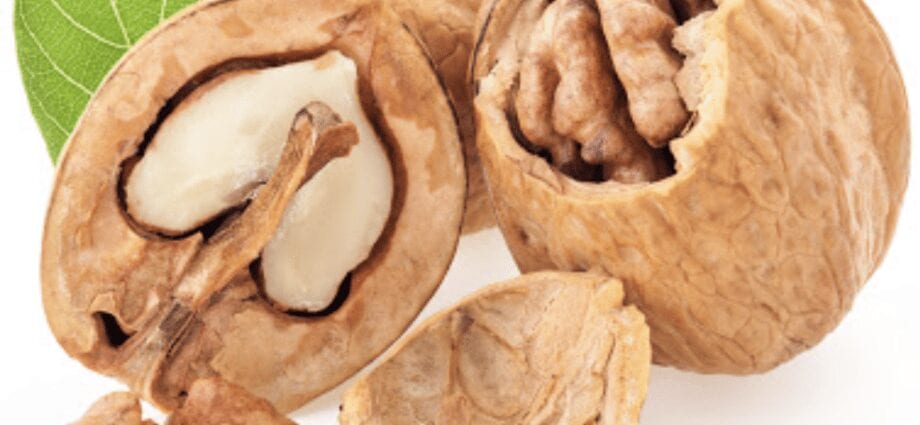Contents
Description
One of the most nutritious foods for the brain is walnuts, which help the body to recover from hard mental and physical labor.
A striking fact, walnuts surpass citrus fruits in terms of vitamin C content by 50 times. And these are not all the unique features of the nut.
Walnut composition

Walnuts are rich in vitamins and minerals such as: vitamin B1 – 26%, vitamin B5 – 16.4%, vitamin B6 – 40%, vitamin B9 – 19.3%, vitamin E – 17.3%, vitamin PP – 24 %, potassium – 19%, silicon – 200%, magnesium – 30%, phosphorus – 41.5%, iron – 11.1%, cobalt – 73%, manganese – 95%, copper – 52.7%, fluorine – 17.1%, zinc – 21.4%
- Calorie content 656 kcal
- Proteins 16.2 g
- Fat 60.8 g
- Carbohydrates 11.1 g
- Dietary fiber 6.1 g
- Water 4 g
Walnut history
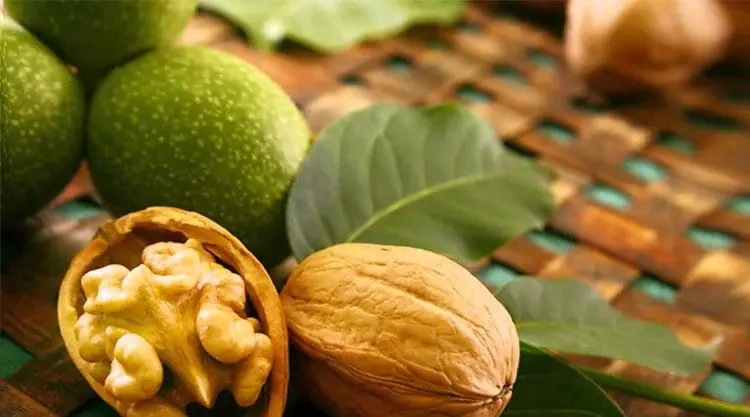
Walnut is the fruit of a tree that can reach a height of 25 meters and live up to 400 years. The homeland has not been precisely established, wild plants are found in the Caucasus, Transcaucasia, Central Asia, the Mediterranean, they prefer a warm climate.
In Europe, this nut is mentioned in the 5th – 7th centuries BC. It is believed that the plant came to the Greeks from Persia. With the suggestion of the Greek people, walnuts began to be called royal – they were so highly valued. Commoners could not eat them. The Latin name is translated as “royal acorn”.
Walnut came to Kievan Rus precisely from Greece, and therefore received such a name.
Dyes from nuts were used to dye fabrics, hair, and animal skin was treated with tannins. The leaves are used in folk medicine and fishing – they contain aromatic substances with which fishermen in Transcaucasia intoxicate fish.

In the modern world, Armenians annually organize the Walnut Festival.
The ancient Greek historian Herodotus argued that the rulers of Ancient Babylon forbade ordinary people to eat walnuts. Those who dared to disobey were inevitably facing the death penalty. The powerful of this world motivated this by the fact that walnut has a beneficial effect on mental activity, that commoners do not need anything.
The walnut, which even in its shape resembles a human brain, differs from other nuts in its high content of polyunsaturated fatty acids, which are so necessary for mental activity.
The benefits of walnuts
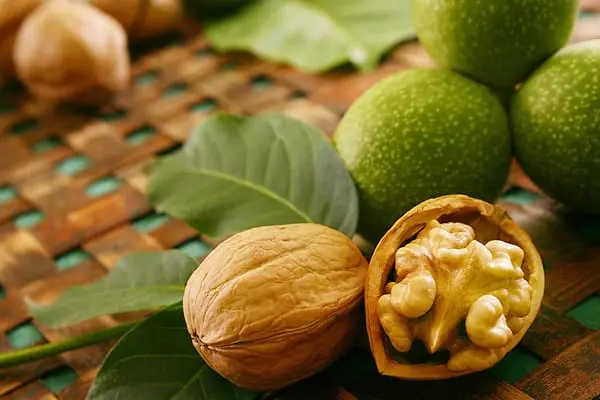
It is not without reason that walnuts are believed to help the brain work. Fatty acids in its composition improve memory and have a sedative effect, thereby reducing the effect of stress and nervous strain.
The high content of vitamins and microelements nourish the body and restore strength, as well as enhance immunity. 100 grams of nuts are approximately equal in nutritional value to half a wheat loaf or a liter of milk. “The protein of the walnut is not inferior to the animal, and due to the enzyme lysine it is more easily absorbed. Therefore, it is recommended to eat walnuts for people weakened after an illness, ”advises Alexander Voinov, a nutrition and health consultant at the WeGym fitness club chain.
The high concentration of iron in these nuts helps fight anemia and anemia.
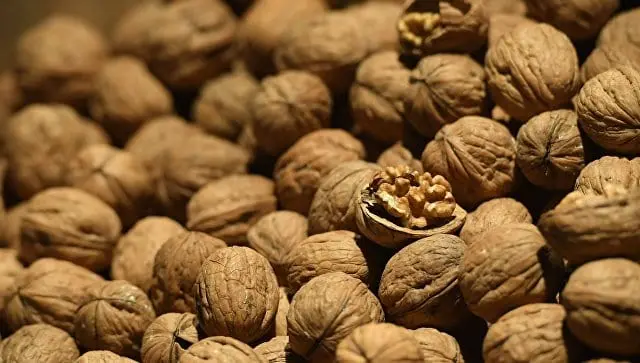
Zinc and iodine found in walnuts are beneficial for skin, hair, nails and thyroid gland.
Walnut is useful for diseases of the cardiovascular system: potassium and magnesium in its composition strengthen the walls of blood vessels, normalize blood pressure and lower cholesterol levels. These nuts can also be eaten with diabetes because they have a low glycemic index and do not raise blood sugar levels. Magnesium also has a positive effect on the state of the genitourinary system and has a diuretic effect, which is indicated for congestion.
Vitamins C and E have antioxidant properties, slow down the aging process and reduce the influence of negative environmental factors.
Walnut harm
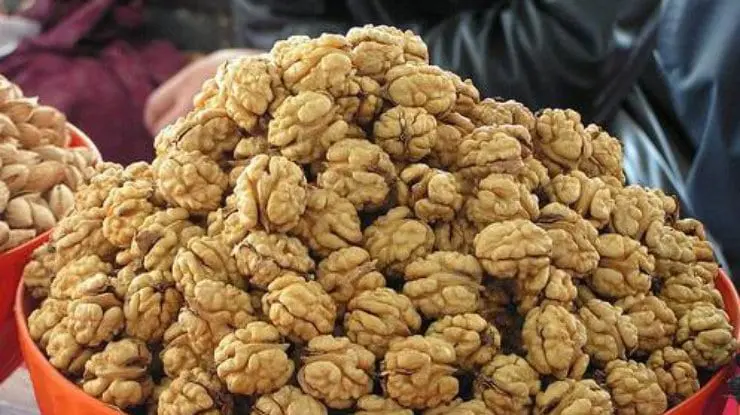
This product is very high in calories, so the maximum amount of walnuts per day is 100 grams, this is especially important for obese people (in 100 grams, 654 kcal). Walnut is quite a strong allergen, so it should be eaten a little and gradually introduced into the diet.
Also, in case of chronic inflammatory diseases of the gastrointestinal tract, these nuts should be eaten extremely carefully and no more than a few pieces.
The use of walnuts in medicine
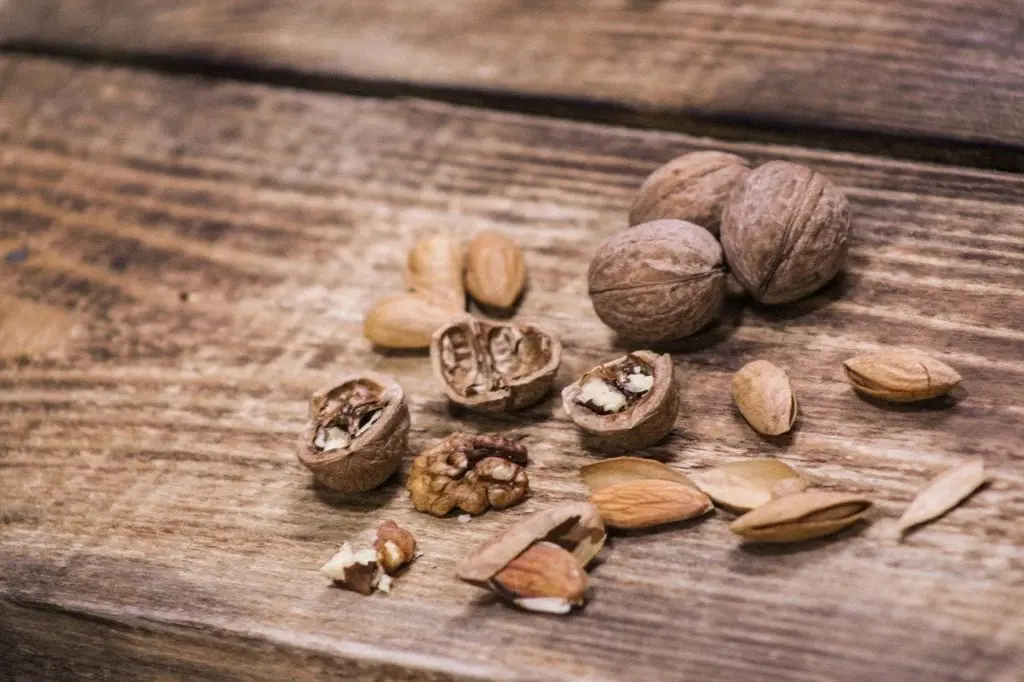
The nut is extremely nutritious, therefore it is included in the diet of people weakened by the disease, malnourished people with reduced immunity.
The leaves of the plant are brewed as a medicinal tea for congestion in the kidneys, inflammatory diseases of the bladder and stomach. The partitions of nuts are insisted and used as an anti-inflammatory agent.
Oil is obtained from walnut kernels, which is used in cosmetology, as well as in the production of natural soap. The oil has an anti-inflammatory effect and is used for skin diseases.
The green walnut shell is used in pharmaceuticals as a component of the drug against skin tuberculosis.
The use of walnuts in cooking
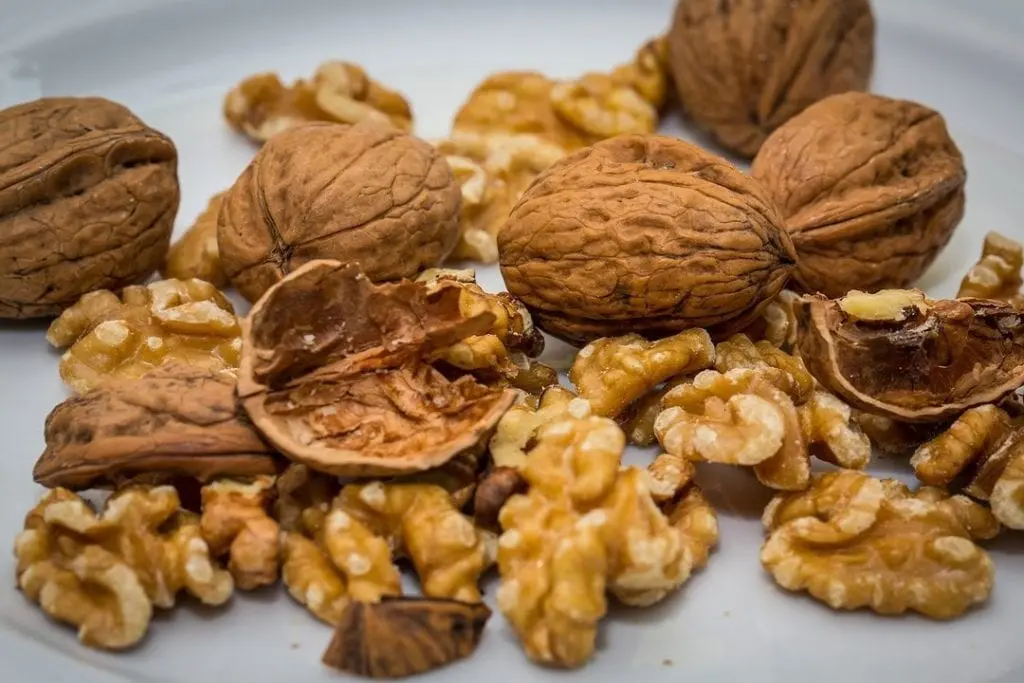
Walnut is a great addition to many dishes, dessert and main. Usually they are used precisely as an additive to other products, but sometimes jam or paste is made from nuts.
Beet salad with walnuts
A digestive appetizer that can be spread on black or cereal bread or eaten as a side dish.
Ingredients
- Beets – 1 – 2 pieces
- Peeled walnuts – small handful
- Garlic – 1 – 2 cloves
- Sour cream – 2 tbsp. spoons
- Salt to taste
Preparation
Wash the beets, boil until soft, cool and peel. Grate beets and garlic on a fine grater. Chop the nuts with a knife. Stir, salt and season with sour cream.
18 Interesting Facts About Walnuts

- The life span of the trees on which they grow can be estimated in centuries. So, even in the south of Russia, in the North Caucasus, there are trees that are more than four centuries old.
- In Ancient Babylon, priests noticed that walnuts outwardly resemble the human brain. Therefore, commoners were forbidden to eat them, since it was believed that they could grow wiser, and this was undesirable (see 20 interesting facts about the brain).
- If you eat at least one walnut every day, the likelihood of atherosclerosis is significantly reduced.
- The origins of its name are unknown to anyone. Walnut originates from Central Asia, but there is a version that it was brought to Russia from Greece, so it was named that way.
- Such a common medicine as activated charcoal is made from its shell.
- Walnuts have a mild sedative effect.
- Eating a few walnuts with honey can help fight the headache if it’s not too bad.
- When eating, they must be thoroughly chewed. Only in this case the benefits they bring will be maximized.
- Like many other nuts, such as peanuts and almonds, walnuts are not. Botanically, it is a drupe (see 25 Interesting Facts About Almonds).
- In Central Asia, some people are sure that the tree they grow on never blooms. There is even a corresponding saying there.
- On average, one adult tree brings up to 300 kg of walnuts per year, but sometimes up to 500 kg are harvested from individual specimens, especially detached ones and with a wide crown.
- The ancient Greeks called them “the acorns of the gods.”
- Walnuts are about 7 times more nutritious than potatoes.
- There are 21 types of these nuts in the world (see 22 interesting facts about nuts).
- It is better to buy unopened walnuts than pre-peeled walnuts. The latter lose a significant portion of their useful properties during storage.
- Walnuts first came to Russia in the 12-13 centuries.
- The wood of these trees belongs to valuable species. It is very expensive because it is more profitable to harvest from them than to cut them down.
- An adult walnut tree can have a trunk diameter at the base of up to 5-6 meters and a height of up to 25 meters.










